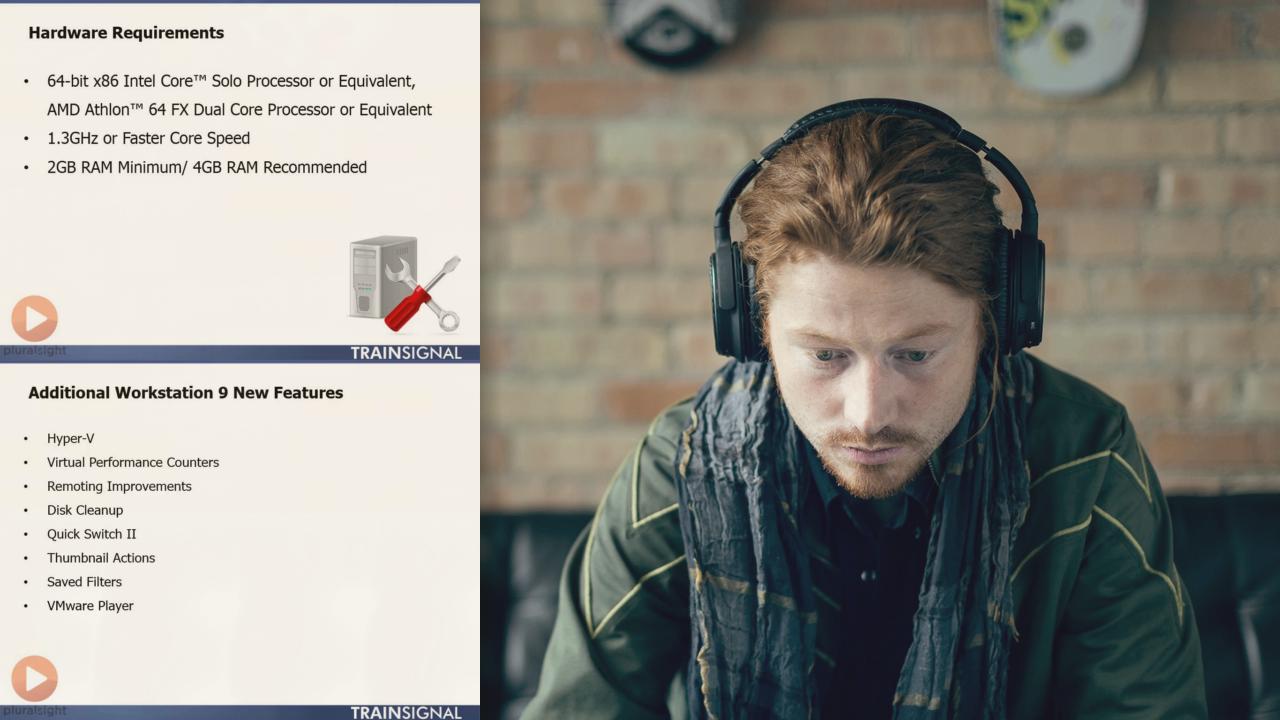- Course
VMware Workstation 9 for the IT Admin
Learn the inner workings of VMware Workstation, including configuring virtual machines, access VMs remotely, and how to download and deploy VMs.

- Course
VMware Workstation 9 for the IT Admin
Learn the inner workings of VMware Workstation, including configuring virtual machines, access VMs remotely, and how to download and deploy VMs.
Get started today
Access this course and other top-rated tech content with one of our business plans.
Try this course for free
Access this course and other top-rated tech content with one of our individual plans.
This course is included in the libraries shown below:
- Core Tech
What you'll learn
This course will show you the inner workings of VMware Workstation. You'll learn to navigate the interface, configure virtual machines, access VMs remotely, and you'll learn to download and deploy virtual appliances. This course is intended for IT administrators who want to become more familiar with VMware Workstation.

